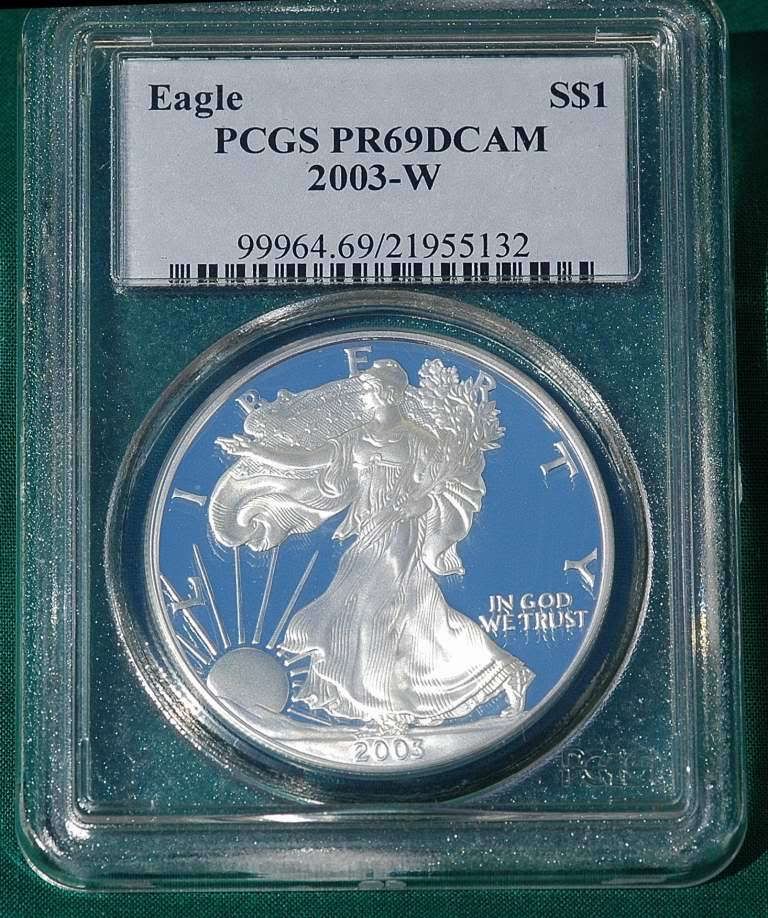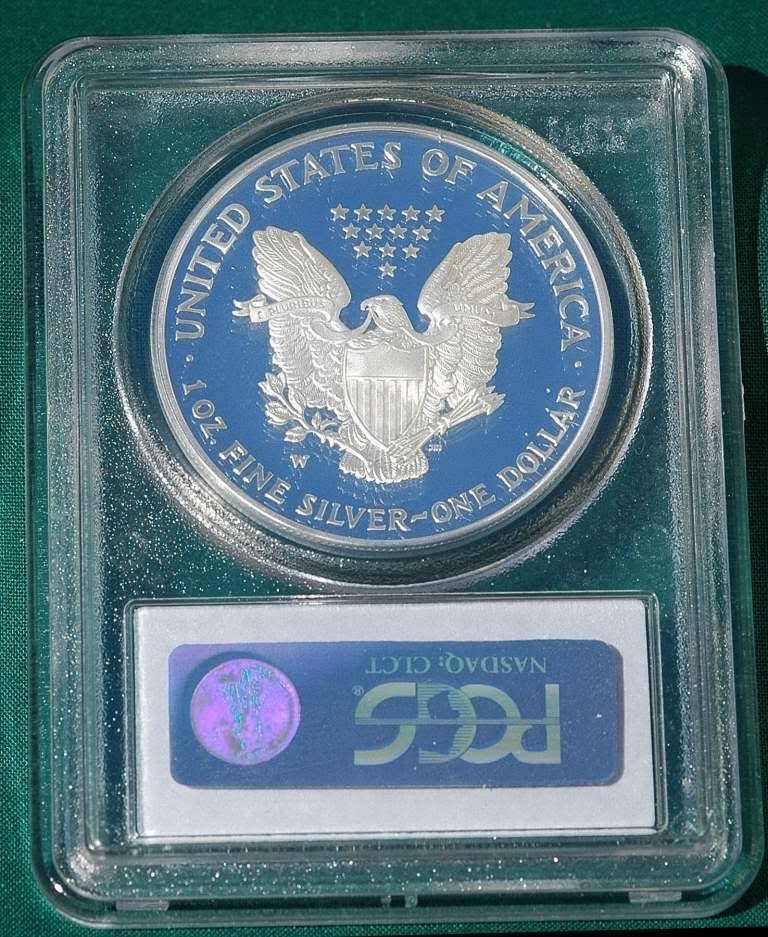Amazing azure blue Georgia sky today produces unique effect
I had a lot of time on my hands today and it was such a beautiful, cloudless day down here, that I took my coin pics outside. Nice effect.
John






John






0
Comments
Check out my current listings: https://ebay.com/sch/khunt/m.html?_ipg=200&_sop=12&_rdc=1
John Marnard Keynes, The Economic Consequences of the Peace, 1920, page 235ff
No, totally raw shot. it is just the reflection from the sky.
<< <i>I'm still waiting for a bird or a plane to fly over...
I'm waiting for that plane, too
"Inspiration exists, but it has to find you working" Pablo Picasso
Nice pics, I wish I could capture some of the sunsets here in South Ga like you've done with the blue sky!
Too many positive BST transactions with too many members to list.
U.S. Type Set
Nice photos, but in all my years, I've never seen that shade of blue. Color is too intense and it doesn't
meet and blend into the rims the way a natural color would. Looks choppy at the rims. Sorry.
~~~~~~~~~~~~
Coin collecting is not a hobby, it's an obsession !
New Barber Purchases
<< <i>Nice photos, but in all my years, I've never seen that shade of blue. Color is too intense and it doesn't
meet and blend into the rims the way a natural color would. Looks choppy at the rims. Sorry. >>
You never looked up at the sky?
Knowledge is the enemy of fear
Turns out that you can't have a yellow sun without a blue sky. Also, you can't have a blue sky without the sun appearing yellow. The OP's pic is beautiful, with the blue sky reflecting off of the mirrored proof surfaces!
When I take a sheet of white paper out into the sunlight, why doen't it appear yellow? With a yellow sun reflecting off it, it should appear yellow.
I'll answer that question later on today.
Proud recipient of two "You Suck" awards
<< <i>When I take a sheet of white paper out into the sunlight, why doen't it appear yellow? With a yellow sun reflecting off it, it should appear yellow.
>>
Not all white light is created equal, that's what white balance is for. Your eyes have an automatic white balance adjustment. The relative color balance of a "black body" radiation source (such as the sun or a halogen lamp) varies with the temperature that it's cooking at.
But we decide which is right
And which is an illusion
Knowledge is the enemy of fear
<< <i>
<< <i>Nice photos, but in all my years, I've never seen that shade of blue. Color is too intense and it doesn't
meet and blend into the rims the way a natural color would. Looks choppy at the rims. Sorry. >>
You never looked up at the sky? >>
~~~~~~~~~~~~
Coin collecting is not a hobby, it's an obsession !
New Barber Purchases
I wish I could see your pics, but they're Photobucket, and the server gods here at work are now blocking Photobucket and all "online communities". Thank goodness CU is still flying below their radar! I would lose my mind if they blocked that.
Collector since 1976. On the CU forums here since 2001.
meet and blend into the rims the way a natural color would. Looks choppy at the rims. Sorry. >>>>
I'm not sure I understand what you are saying but, if you think the coin itself is blue, it's not. It's silver and the color is the reflection of the sky.
If you think I enhanced the color, why would I go to the trouble? The color speaks for itself, I didn't need to do anything to it.
<< <i>White light comes from our sun. So why does it appear yellow?
Turns out that you can't have a yellow sun without a blue sky. Also, you can't have a blue sky without the sun appearing yellow. The OP's pic is beautiful, with the blue sky reflecting off of the mirrored proof surfaces!
When I take a sheet of white paper out into the sunlight, why doen't it appear yellow? With a yellow sun reflecting off it, it should appear yellow.
I'll answer that question later on today. >>
Our star is actually a WHITE star.
The Sun has a spectral class of G2V. G2 implies that it has a surface temperature of approximately 5,780 K, giving it a white color which, because of atmospheric scattering, appears yellow as seen from the surface of the Earth. This is a subtractive effect, as the preferential scattering of blue photons (causing the sky color) removes enough blue light to leave a residual reddishness that is perceived as yellow.
Also, objects appear a certain color because the object is absorbing all of the colors of the light specetrum except the color you're seeing.
Paper appears white because it's reflecting the blue from the sky, as well as the rest of the color spectrum from the sun, recombining and reflecting all of it to appear white.
"but, blue and yellow make green!"
Right. Except, our star is white. The only color it is loosing when it shines through our atmosphere is blue. Recombining that blue with the rest of the light that gets through our atmosphere will make white light.
<< <i>Red is grey and yellow, white
But we decide which is right
And which is an illusion >>
Dave-I've got that album!
Oh, the sky's AT. Mike
I knew it would happen.
Proud recipient of two "You Suck" awards
Cool pictures.
.
CoinsAreFun Toned Silver Eagle Proof Album
.
Gallery Mint Museum, Ron Landis& Joe Rust, The beginnings of the Golden Dollar
.
More CoinsAreFun Pictorials NGC
<< <i>Gotta agree with boggledmind, and with that in mind; Why do stars twinkle while planets and moons do not? Hint: It can't be the light refraction or distortion due to the atmosphere since the light from both travel through the atmosphere. >>
Because stars generate light whereas planets just reflect it.
Knowledge is the enemy of fear
Because stars generate light whereas planets just reflect it. >>>
Exactly, it has to do with the different properties of radiated light vs. reflected light.
When the sun is a sliver in the sky, twinkling becomes evident as shadow bands just before and just after totality.
Proud recipient of two "You Suck" awards
<< <i> Gotta agree with boggledmind, and with that in mind; Why do stars twinkle while planets and moons do not? Hint: It can't be the light refraction or distortion due to the atmosphere since the light from both travel through the atmosphere. >>
<< <i>Exactly, it has to do with the different properties of radiated light vs. reflected light. >>
Actually, according to NASA, stars twinkle because of temperature variations in the air. No astronaut has ever reported stars twinkling outside of our atmosphere, so twinkling must be an atmospheric phenomenon. With stars, only a single ray of light is hitting our planet, which lets the temperature differences in the air affect the refraction of the ray quite easily.
The moon and sun, however, are sending so many rays that it doesn't matter that some of them are scattered away, so as long as the remaining ones are scattered towards us. The image looks steady. For this same reason, because planets are MUCH closer to us than distant stars, they are not single points of light. The twinkling of planets is much more muted. They do, however, still twinkle.